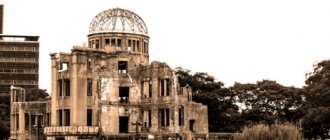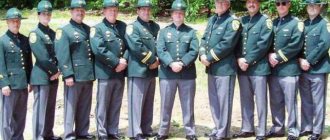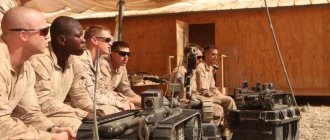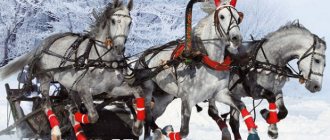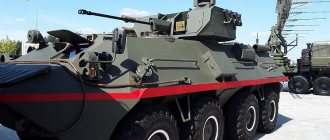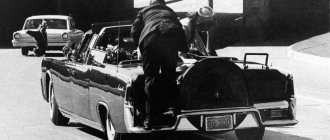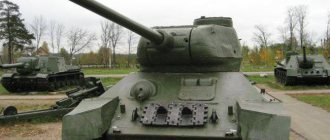75 years ago, atomic weapons were used for the first time in the world. On August 6, a bomb fell on Hiroshima. Three days later, the same thing was supposed to happen in Kokuro, but bad weather prevented the matter and the pilot moved to Nagasaki, where “Fat Man” was dropped on August 9.
Up to 100 thousand people died directly from the explosion in Hiroshima. Its consequences claimed the lives of almost 300 thousand people. In Nagasaki, according to some sources, “Fat Man” killed 70 thousand Japanese. Later, more than 165 thousand died from numerous wounds and radiation sickness. These events left a serious imprint on history. To this day, the Japanese remember the iconic moments of those times. 5-tv.ru recalls important episodes of the August days of 1945.
"Enola Gay"
On an early August morning, the name Enola Gay was not yet familiar to the world community. This was the name given to the US Air Force bomber Boeing B-29 Superfortress. The aircraft was named in honor of the mother of the crew commander, Paul Tibbetts. The name of this woman will soon go down in history as the worst nightmare of millions of Japanese.
The Enola Gay aircraft was named after the mother of the crew commander, Paul Tibbetts. RIA Novosti / Sergey Mamontov
Hiroshima and “The Kid”: how it happened
Morning - there’s nowhere better, but there’s no time to admire
Landscape of streets and roofs.
It's time to drown out the echo of Pearl Harbor -
Soft landing, “Baby”...
Oleg Medvedev, "Baby"
Already in 1944, it became clear that the war would not end well for Japan. However, this not only did not reduce the fighting impulse of the Japanese military, but on the contrary —
only strengthened it. After all, as the old Japanese saying goes, a soldier who returns from battle alive does not love his Emperor. As a result, in the less than three months between the actual end of the war in Europe at the end of April 1945 and mid-July, when discussions began on plans to end the war on the Pacific front, the Japanese army and navy inflicted only half as many casualties on the Americans as in the previous three years of the war. And this was when the Japanese fleet was only a pale shadow of itself, and aviation practically ceased to exist.
In such conditions, the planned landing on the Japanese islands was supposed to be very expensive - the American military expected losses in the amount of one and a half to four million people, of which 400-800 thousand would be killed. It was then that the idea arose to use any means that could “soften” the Japanese defense. On the island of Luzon, a huge amount of cyanogen chloride, phosgene and a number of other chemical warfare agents were collected, which were going to be unleashed on Japan before the landing. There were plans to use biological weapons. Among other things, the idea arose to intimidate the Japanese leadership by demonstrating the results of the Manhattan Project, within which nuclear weapons were developed.
Many military leaders, including the famous General Douglas MacArthur, were distrustful of the idea of giving a key role in ending the war to some incomprehensible “superweapon”, operating on very vague physical principles for a person of those years and not really tested. At that time, only one nuclear device was detonated, and on the ground. No one could guarantee that that test was not just a lucky coincidence and that subsequent devices would explode just as successfully. Also, no one could guarantee that the device, which worked normally, being rigidly fixed at the top of the test tower, would work after long hours of shaking on board the aircraft, in a falling state - would it turn out that the Americans would simply give the Japanese military a bunch of expensive radioactive materials, dropping them on the city? Reasonable arguments were made that Japanese cities were already being regularly bombed with conventional ammunition, that the technology of such raids had been worked out, and that the fires that resulted from them successfully destroyed both buildings and the population at a pace quite satisfactory to the command. However, the decisive argument was that the new weapon would have an incomparable intimidating effect not only on the Japanese, but also on other countries of the world, thereby strengthening the political position of the United States.
Letter from General Thomas Handy in which he officially gives the go-ahead for the use of atomic bombs
Scientists initially proposed a peaceful demonstration of the bomb - detonating it on some deserted island, inviting representatives of Japan to observe the process. However, this proposal was rejected - not being completely sure that the device would work at all, the military did not want to take risks. If they had announced a new superweapon to the whole world in advance, and it had malfunctioned during the demonstration, the damage to reputation would have been catastrophic, and after that there would have been no possibility of ending the war with the help of psychological pressure. For the same reason, the dropping of the atomic bomb was not announced in advance in propaganda leaflets - before that, all mass bombings of Japanese cities were preceded by the dropping of threatening leaflets.
Four targets were chosen for the bombing: Hiroshima, Kokura, Niigata and Kyoto. All four cities were large enough and had both significant military installations and extensive civilian development, which would allow a full assessment of the damage caused by the new ammunition. Subsequently, Secretary of War Henry Stimson insisted on excluding Kyoto from the list, since he had spent his honeymoon there at one time and really liked the city. As a result, Nagasaki took the place of Kyoto. The air command agreed not to carry out routine raids on these cities so that the experiment to evaluate the capabilities of the new weapon would be more “clean.”
Bombers of the 509th Mixed Regiment parked, August 1945. From left to right: “Big Stink”, “The Great Artiste”, “Enola Gay”
To carry out the task, the 509th mixed air regiment was created back in December 1944. It consisted of 15 B-29 bombers, as well as C-47 and C-54 transport aircraft. All bombers were modified to carry a new bomb, noticeably heavier than anything they had previously carried: strengthened engines, new propellers, redesigned bomb bays. A curious fact is that all bombers also had proper names. The names were assigned to them on the spot, after they were collected from different bomber regiments, and therefore most of them were associated with the upcoming mission: “Top Secret”, “Strange Cargo”, “ Necessary Evil, Up An' Atom. For the bombing of Hiroshima, the plane with the number 82 and the name assigned to it literally the day before was chosen - “Enola Gay”. It was named so in honor of Enola Gay Tibbetts, the mother of the crew commander, Colonel Paul Tibbetts.
On the night from the fifth to the sixth of August, at fifteen minutes to two, a group of planes took off from the airfield on the island of Tinian. Enola Gay carried a Little Boy nuclear device with a yield of about 16 kilotons. The bomber called “Top Secret” was a reserve aircraft. The “Great Artist” carried scientific equipment that was supposed to record the parameters of the explosion and its consequences. “Necessary Evil” carried photographic and film equipment. An hour before this group, three bombers (“Jebit III”, “Full House” and “Street Flash”) were lifted into the air, which acted as weather reconnaissance aircraft - they headed towards three intended targets and had to assess the weather conditions above them. A clear sky was important not only in order to ensure a hit, but also in order to carry out the necessary shooting. The bomb was not equipped during takeoff - the command, which had to observe B-29 accidents that occurred during takeoff more than once or twice, least of all wanted the superweapon to wipe out their airfield instead of a Japanese city. Only after fifteen minutes in the air, when the Enola Gay had moved away at a sufficient distance, Captain Parsons, the mission commander and weapons specialist, began installing the fuse and bringing the bomb into working condition.
Bomb "Baby" in storage, just before installation on the plane
Weather scouts reported significant cloud cover over Nagasaki and Kokura, while there was almost no cloud cover over Hiroshima. It was decided to bomb Hiroshima. Half an hour before reaching the target, the fuses were removed from the “Kid”. At 8:09 a.m., the Enola Gay went on a combat course, with the bombardier, Major Ferebee, taking control. At 8:15, "Baby" left the bomb bay and went down. It was equipped with a parachute - so that the planes had time to move away to a safe distance before the radio-altitude fuse commanded the detonation. The Baby's flight lasted forty-four point four seconds; it detonated at an altitude of 580 meters above the surface.
Due to cross winds, the bomb did not hit the pre-designated point - the Aioi Bridge, which was chosen for its characteristic T-shape, clearly visible from the air. The deviation was about 250 meters, and the explosion occurred exactly above the roof of the Sima Hospital.
Residents of Hiroshima, of course, could not help but notice that their city had not been bombed for a long time. There were a variety of rumors - from the most false (that the city was being spared because a certain high-ranking American military leader at one time had an affair with one of the local women, or because relatives of local residents living in the USA wrote a petition to the American president) to quite sensible and plausible ( that the city was designated by the Americans as the residence of the occupation administration, which is why they do not want to turn it into ruins). City authorities, not relying on the fact that silence would continue indefinitely, have paid a lot of attention to protective measures since 1944. In particular, partial demolition of buildings was carried out to prevent the spread of fires - like most Japanese cities of that time, Hiroshima was very vulnerable to fire, since almost all the buildings, including industrial workshops, were wooden, only in the center there were several buildings made of stone and reinforced concrete. These firebreaks in the buildings were created and expanded before the bombing, but they turned out to be completely undesigned for such a scale of destructive impact.
From a military point of view, Hiroshima was a tempting target - it housed several headquarters, including the headquarters of the Second Command (the land group responsible for the defense of the Japanese islands itself), based in a local castle, and a large number of warehouses with military equipment. More than forty thousand people out of approximately three hundred and fifty thousand people in the city were military personnel.
At the moment when the "Kid" left the bomb bay of the Enola Gay, the city looked anxiously into the morning sky. The air raid alert was announced for the second time that night - the first time it was provoked by an armada of bombers heading towards other cities, but at five minutes past twelve, when it became clear that none of them were heading towards Hiroshima, they announced a clearing. The second time the siren sounded was when surveillance posts detected a Street Flash scouting weather conditions.
The communications center of the Chugoku Military District, located in the basement of Hiroshima Castle, sounded and canceled the air raid warning in the city. High school student Yosi Oka, mobilized as a communications operator, was just sounding the alarm when the explosion occurred. A few minutes later, she picked up a special telephone to contact the command and reported: “Hiroshima was attacked by a new type of bomb. The city no longer exists."
Hiroshima after the explosion
This was not much of an exaggeration. The explosion practically wiped out the city center from the face of the earth. The total area of destruction was 12 square meters. km, three quarters of the city's buildings were destroyed and damaged. More than seventy thousand people died, of which about twenty thousand were military. The mayor of the city died, so Field Marshal Shinroku Hata, head of the Second Command, miraculously survived and escaped with only minor injuries, took over the leadership of the rescue efforts. Since the Japanese did not have information about radioactive contamination (in fact, the Americans did not have it at that time either), no measures were taken to evacuate the population from the bombing site - they limited themselves to putting out fires, clearing the rubble and removing corpses as usual in such cases. There was no one and nowhere to provide medical care to the victims - all medical institutions in Hiroshima were located in the center and were destroyed by the explosion, killing more than 90% of doctors and orderlies. All this led to the fact that about seventy thousand more people died from wounds, burns and radiation poisoning.
Among the dead were about twenty thousand Koreans brought to forced labor in Japan - in fact, one in seven who died in Hiroshima was Korean. For a long time, among the victims of the bombing were twelve captured American pilots who were kept in the control of the Kempeitai (Japanese military police). It later turned out that only two of them died from the explosion - eight were executed earlier and recorded by the Japanese as victims of the bombing for propaganda purposes, and the remaining two were dragged to the Ayoi Bridge by Kempeitai employees after the explosion, where they were thrown to be torn to pieces by the crowd. The people of Hiroshima that day had very little reason to like the American pilots.
The day after the bombing, President Truman gave a speech in which he notified the world that the United States had an atomic bomb and its use in Hiroshima. The Japanese government did not react. On the same day, Dr. Yoshio Nishina, head of the Japanese nuclear program, visited Hiroshima. Having examined the traces of the bombing, he confirmed that the city was indeed destroyed by an atomic explosion. According to Japanese experts, America would have enough resources to produce three or four more bombs, no more, due to which it was decided that this was too little to give up for the sake of this - the country, they say, could survive this without much difficulty. This decision was intercepted by American intelligence, and it became clear that the intimidation plan had failed. After a brief discussion, it was decided to continue the bombing until the materials for its production ran out, or until the Japanese surrendered. As you know, another such bombing occurred - the city of Nagasaki, two days later, on August 9. These are the only cases of combat use of atomic weapons in history. What role they played in the surrender of Japan and the final end of World War II is a debate that continues to this day.
On the twelfth, Japanese Emperor Hirohito announced to those close to him that he intended to capitulate, citing the entry of the Soviet Union into the war against Japan as the main reason for this decision. On August 14, in his radio speech with a message about surrender (it was broadcast in a recording the next day, August 15), the emperor, among other things, mentioned “the new terrible weapon of our opponents” and said that because of it, continued resistance is impossible, since it will lead to “ to the complete destruction not only of the Japanese nation, but of all humanity." On August 17, in an address to soldiers and sailors, Hirohito again pointed out the Soviet offensive in Manchuria as the main reason for surrender, and did not mention atomic bombs at all. In a conversation with Douglas MacArthur on September 27, the Emperor mentioned that “the bomb gave rise to dramatization of the situation.” This, in general, explains the role of the atomic bombings - they occurred at an opportune moment, providing the emperor with a compelling (in the eyes of the public) reason for raising the white flag, which he had been meaning to do for a long time.
The Enola Gay bomber, which ushered in the atomic era in history, was kept in the storage rooms of the Smithsonian Institution for a long time. In 1984, work began on its restoration. The fuselage of the aircraft (everything else had not yet been restored at that time) was demonstrated in 1995–98 at an exhibition dedicated to the fiftieth anniversary of the bombing, where it caused a mixed reaction from the public. Civil activists threw bags of ash and blood at the fuselage and doused it with paint. However, despite this, the exhibition functioned for three years. In 2003, the restoration of the aircraft was completely completed, and now it can be seen at the Steven Udvar-Hazy Center (one of the branches of the Smithsonian Institution Air Museum).
Enola Gay at the Smithsonian Institution Air Museum
In Hiroshima, on the site of the epicenter, a Peace Park was created. A number of buildings that were damaged by the explosion, but not completely destroyed, were not restored and turned into memorials, such as the world famous “Atomic Dome” - probably the most graphic and frightening visual embodiment of that distant day.
08:15 am
The Little One atomic bomb fell on Hiroshima on the morning of August 6, 1945. The city's clocks stopped at 08:15 when a four-ton bomb killed nearly 300,000 people. In the future, this time will occupy a special place in world history. And for the Japanese, it will mark the beginning of one of the country's greatest tragedies.
In 1955, the Peace Memorial Museum will open in Hiroshima, where the belongings of those affected by the disaster will be collected. The exhibits will include not only photographs, audio and video materials, but also a clock whose hands froze at 08:15 in the morning.
Nuclear bomb MK-16
This is the first of the most powerful nuclear bombs that the United States adopted. The device ran on liquid deuterium (heavy hydrogen). The bomb had a length of 7.54 m and a total weight of 19 tons.
Bomb Ivy Mike
A single B-36 bomber could carry this bomb. Its engines were specially upgraded to carry the MK-16.
Shadows of Hiroshima
The temperature at the epicenter of the explosion was so high that nearby bodies immediately evaporated. All that remains of them are silhouettes formed on the walls of buildings and the sidewalk due to strong radiation. These shadows became one of the iconic moments of the atomic bombing of Hiroshima.
They once belonged to ordinary Japanese who lived through terrible wartime. Some carefreely went down the stairs, others leaned their backs against the wall of the house, not even suspecting that this was the last moment in their lives.
Ivy Mike - the first hydrogen bomb
The device was not intended for military use and was intended for experimentation. The power of the explosion was 10-12 megatons.
Photo of the real Ivy Mike bomb explosion
The hydrogen bomb had the following characteristics:
- length – 6.19 meters;
- weight – 82 tons;
- The radius of the fireball produced during the test is 3.3 km.
The explosion was so strong that a mushroom 17 km high was formed in 1.5 minutes. Its final height was 41 m. Radioactive debris fell within a radius of 56 km. Radioactive fallout was observed for 3 months.
Hibakusha
Hibakusha translated from Japanese to Russian means “people exposed to explosions.” These women, children and old people survived the fall of the atomic bomb on Hiroshima and Nagasaki, but the consequences of the explosion made themselves felt in the future. The first officially registered hibakusha was Japanese theater actress Midori Naka. The woman died of radiation sickness 18 days after the disaster. At the time of the explosion, the Japanese woman was 650 meters from the epicenter.
However, the hibakusha from Nagasaki, Sumiteru Taniguchi, became much more famous. In August 1945, Sumiteru Taniguchi was only 16 years old. On the day “Fat Man” fell on Nagasaki, he was delivering mail on a bicycle. According to the Japanese, at first he saw something similar to a rainbow, then the blast wave threw him off his bicycle. Having come to his senses, he looked at his hands and saw that the skin was hanging from them like a rag. But on the back there was no skin left at all.
Sumiteru Taniguchi recovered only 15 years after the bomb fell. globallookpress.com/Lucas Vallecillos
The young man’s injuries were captured by a photographer, after which Sumiteru was nicknamed “red back.” For several years he could hardly move. He had to undergo ten operations. Sumiteru's treatment ended only in 1960. In the future, the Japanese will become an activist for the ban on nuclear weapons and will take the position of chairman of the Council of Victims of the Nuclear Bombing of Nagasaki.
Bombs of the arms race
Powerful bombs developed between 1945 and 1998:
| Trinity | This is the first bomb with which nuclear testing began. It had 21 kilotons of TNT equivalent, and the cloud rose 11 km into the air. It was first tested in 1945. |
| Baker | It was tested in water at a depth of 27 m. An explosion with a power of 23 kilotons displaced more than 2 million tons of water and created a vertical column up to half a kilometer. The purpose of this test is to determine the effect of a nuclear explosion on ships on the surface. |
| Rhea - the most powerful French bomb | The 955 kiloton projectile was tested at the Mururoa Atoll test site in France. More than 200 nuclear bombs were exploded there until 1998. Rhea turned out to be one of the most destructive atomic devices. It was tested in 1971. |
| Castle Yankee | The bomb serves as the second most powerful nuclear weapon produced by American scientists. The explosion had a force of 13.5 Mt. The height of the mushroom stem was 40 km. Despite the distance from the nearest cities, the radioactive cloud reached Mexico City, the capital of Mexico. |
| American nuclear bomb B-41 | A powerful thermonuclear charge with the equivalent of 25 Mt was in the US military arsenal from 1960 to 1976. It is considered the most effective thermonuclear weapon. |
Paper cranes
Sadako Sasaki was only two years old when the atomic bomb fell on Hiroshima. The girl survived, but the consequences of August 6, 1945 would appear in her life nine years later. At some point, the child will show signs of radiation sickness. Sadako's health will begin to rapidly deteriorate.
One day a girl was told a legend that supposedly whoever folds a thousand cranes out of paper will recover from any illness. Dreaming of being healed, Sadako folded birds out of paper until the day of her death on October 25, 1955. In the future, the paper crane will become one of the symbols of peace, and a monument to Sadako will be erected in the Hiroshima Peace Park. However, among the survivors there were not only people, but also buildings.
The story of Sadako Sasaki has become a monument to the horrors of atomic war. neinvalid.ru
"Shrimp"
TX-21 - “Shrimp” (14.8 megatons) has the second name Castle Bravo. It was tested in 1954. The device, weighing more than 10 tons and measuring more than 4.5 meters in length, was originally developed as a 6-megaton weapon.
Due to design errors, the explosion on the coral island of Bikini turned out to be almost three times more powerful than researchers expected. The release created by the explosion exceeded 15 megatons. During the first second, a fireball with a diameter of 7.2 km was formed. It was visible from a distance of more than 402 km.
Explosion of the Shrimp nuclear bomb
Results of the explosion of the TX-21 nuclear bomb:
- the height to which the mushroom cloud rose during the explosion of the Shrimp - 14 km;
- mushroom width – 11 km;
- The area of ocean contamination with radioactive waste is almost 18 thousand km2.
Strong winds carried harmful substances to Southeast Asia, the American mainland and Australia.
The radioactive fallout exposed thousands of people. Side effects included nausea, hair loss, and burns. Despite the small scale of the explosion compared to other bombs, the Shrimp remains the largest warhead tested in real conditions.
Sanno-jinja
The Fat Man atomic bomb dropped on Nagasaki was more powerful than the Hiroshima Little One, but due to the specifics of the local terrain it had a slightly less destructive effect. A special place in the Nagasaki tragedy was occupied by the gates of a Shinto shrine, located 900 meters from the epicenter of the explosion. The blast wave destroyed one of the sanctuary's support columns as one remained standing. In the future, it will become a monument, almost a shrine, which recalls the horrors of the tragedy of August 1945.
Photos of these gates are often published on social networks, and every now and then they are surprised at what they were made of. Meanwhile, some seriously believe that they survived miraculously.
Many years later, Paul Tibbets, who dropped the bomb on Hiroshima, was asked if he repented of what he had done. The pilot answered “no.” He said he would do it again. The man passed away in 2007 after a series of mini-strokes. Before his death, he bequeathed not to erect a monument on his grave, fearing that it would one day become a victim of vandals. At the same time, Charles Sweeney, who dropped “Fat Man” on Nagasaki, once admitted that he only wanted the war to end as quickly as possible and for them all to return home to their loved ones. The pilot said he hoped his missions would eventually be the last of their kind.
Bomb MK-24
A device with a capacity of 10-15 Mt was created back in 1954 by American scientists. The bomb turned out to be the third largest among all other nuclear charges. It was designed in a short time. The bomb had the following characteristics:
- length – 7.5 m;
- weight – 19 t;
- estimated capacity – 15 megatons.
Photo of the MK-24 nuclear bomb.
Tests of this charge were not carried out. A parachute was created under the bomb to ensure a smooth descent.
Smart bombs
Instead of free-falling bombs, gliding and adjustable warheads are used in the new millennium. They are designed to accurately hit targets. They are guided using radio, satellite and television signals. Such ammunition hits the target more accurately than free-falling bombs.
Guided air bombs (CABs) are dropped from an altitude of more than 60 km to prevent bombers from falling into enemy air defense coverage.
Smart bombs are present in the military arsenal of many countries. They were first used in 45-49 of the 20th century. The US military maintains several dozen types of KAB in reserve.
In 2002, the Americans began to develop the GBU-43/B high-explosive ammunition. Unofficially, he was called “The Mother of All Bombs.” The only operational model was sent to Iraq, but was not put into operation. The length of the bomb exceeded 9 m, and the diameter was 1 m. The destruction range of the device was 65 km. Before the development of the AVBPM, it was considered the most powerful bomb without a nuclear warhead.
Could it have been otherwise?
Why wasn't the atomic bomb dropped on a deserted island or on Japanese troops at the front?
Indeed, there were such proposals. But.
Firstly, no one really knew how an atomic bomb would work in real combat conditions, and not at a test site. The “Kid” was even equipped with detonators already in flight. Otherwise, suddenly the Enola Gay would crash at the start - and take the entire base with it.
Another variant. They called the Japanese for a demonstration somewhere in the desert, but the bomb went off and didn’t explode.
Confusion for the whole world! How can you then convince that “you lost”?
Third. They would have warned about the bombing in advance - but the Japanese took and shot down the plane with the bomb.
Therefore, the most prominent atomic scientists gathered, discussed and wrote: “We see no acceptable alternative” except to use the bomb for its intended purpose.
Clock stopped at the moment of explosion
On the same topic
What nuclear weapons gave the world: “brighter than a thousand suns”
Wait for the Russians? What if the Japanese didn’t want to surrender even then?
The most realistic (and terrible) alternative to one B-29 with an atomic bomb is a couple of hundred conventional B-29s with napalm.
Therefore, the American military in 1946 believed that the Japanese would still have surrendered before the end of 1945 - even without the atomic bombings and the Soviet offensive. But they thought so after the victory - and before getting to know Japan’s defense plans in detail.
In the summer of 1945, adviser to the Secretary of War and physicist William Shockley wrote that to win, at least five to ten million Japanese would have to be killed in exchange for 400-800 thousand American lives.

